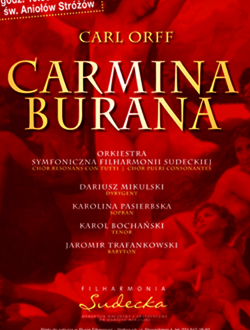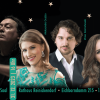
With great symphony orchestra, two choirs, soloists 3. A spectacle full of unique experiences.
Carl Orff Carmina Burana discovered in 1935 and set to music for 24 of these texts in the years 1935/1936. It involves a complete re-composing, especially since the emergence time of Orff’s work, none of the original medieval melodies was reconstructed. So he created the music for already known stylistic features of the Middle Ages such as bourdon accompaniment or historical scales. Orff himself called his work not as an opera, oratorio or cantata as yet. The term “Scenic cantata”, is the work sometimes added as subtitles, the piece probably most suited, but are staged performances of Carmina Burana over concert clearly in the minority.
On 8 June 1937, his work was first performed in the opera at Frankfurt am Main. .
Framed the work of a mighty chorus is in honor of the goddess of fate Fortuna (Fortuna Imperatrix Mundi), which will ultimately determine the fate of the people. After the composition of Carmina and Trionfo di Afrodite Catulli Carl Orff Carmina Burana with the summed these together under the title trionfi. Performances of the entire triptych but the exception remained.
Orff started off with a division into three parts:
- Primo vere,
- Uf dem Anger (Awakening of spring, Love)
- In taberna (Opulent Feast)
- Cour d’amour and Blanziflor et Helena (convergence of two young people who love goddess Venus)









